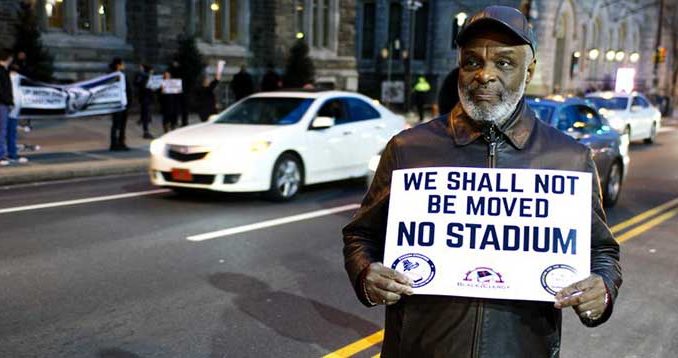
Stacy M. Brown NNPA Newswire Senior Correspondent
From a dowdy provincial city in the 1980s, Philadelphia has become a world-class urban center through gentrification – primarily through landmark architecture that now sets the city center, and University City, apart.
“Over 50, and retirees, are moving back from the suburbs where they raised their children into Center City and the Italian Market where I have lived since 1980,” stated Dr. Margaret J. King, the director of The Center for Cultural Studies & Analysis in Philadelphia.
“Of course gentrification brings money into the city, while it also drives up home prices – some houses have multiplied their asking prices 15 times over 40 years,” King noted.
“Housing is being restored and renovated, making more of the city habitable and in fact desirable. Now the suburbs have flipped into a working-class magnet as well as a market for Millennials who can’t yet afford center-city prices,” King stated.
Gentrification isn’t just an issue in Philadelphia – not by a long shot.
According to a March 2019 study by the National Community Reinvestment Coalition (NCRC), more than 135,000 Black and Hispanics around the nation were displaced between 2000 and 2012.
Gentrification and displacement of long-time residents were most intense from 2000 to 2013 in the nation’s biggest cities, and rare in most other places, according to the study.
During those years, gentrification was concentrated in larger cities with vibrant economies but also appeared in smaller cities where it often impacted areas with the most amenities near central business districts.
In Washington, D.C., 20,000 Black residents were displaced, and in Portland, Oregon, 13 percent of the Black community was displaced over the more than decade period that was studied.
Seven cities accounted for nearly half of the gentrification nationally: New York City, Los Angeles, Washington, D.C., Philadelphia, Baltimore, San Diego, and Chicago.
Washington, D.C., was the most gentrified city by percentage of eligible neighborhoods that experienced gentrification; New York City was the most gentrified by sheer volume, study authors noted.
According to the Merriam-Webster Dictionary, gentrification is defined as the process of repairing and rebuilding homes and businesses in a deteriorating area, such as an urban neighborhood, accompanied by an influx of middle-class or affluent people and that often results in the displacement of earlier, usually poorer residents.
“Gentrification is rich people deciding they want a specific neighborhood as their own, and they get municipal backing, pay some money, and get all of the poor people out of there,” stated Mark Love, a New York realtor
Neighborhoods were considered to be eligible to gentrify if, in 2000, they were in the lower 40 percent of home values and family incomes in that metropolitan area.
During the study, researchers found that most low- to moderate-income neighborhoods did not gentrify or revitalize.
Instead, they remained impoverished, untouched by investments and building booms that occurred in major cities, and vulnerable to future gentrification and displacement.
In Portland, Oregon, an essay that accompanied the NCRC study noted that city as the “Whitest city of its size in the United States.”
The city’s White population currently stands at 77.4 percent while Blacks make up just 5.7 percent.
“Take a group of people who have been systematically denied wealth-building opportunities for generations, add low, stagnating incomes, throw in a subprime mortgage disaster, spiraling housing costs and wholesale community displacement, and you have a recipe for a severe economic backslide,” Cheryl Chandler-Roberts, executive director of Portland’s African American Alliance for Homeownership, said in the report.
“There is no African American community in Portland at this point,” Chandler-Roberts stated. “It’s a scattered community.”
Gentrification and displacement of long-time residents were most intense from 2000 to 2013 in the nation’s biggest cities, and rare in most other places, according to the study. During those years, gentrification was concentrated in larger cities with vibrant economies but also appeared in smaller cities where it often impacted areas with the most amenities near central business districts.
Recommended For You.



Be the first to comment